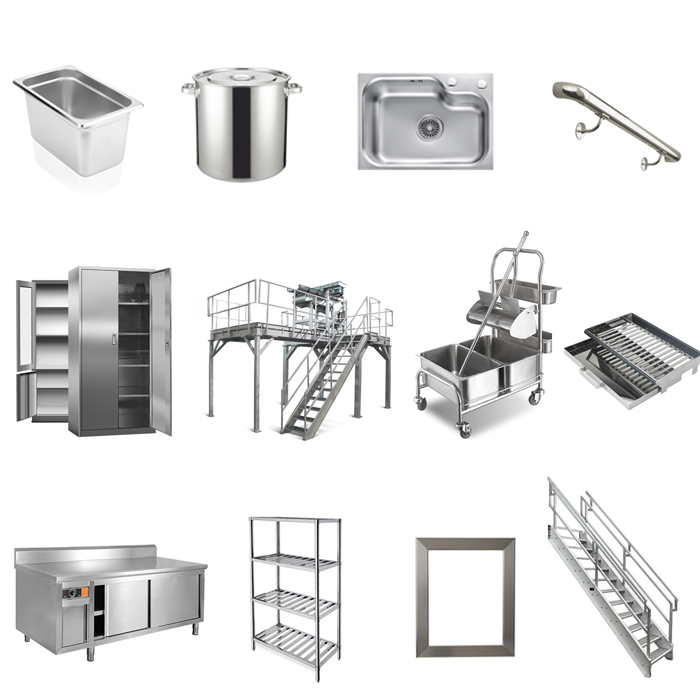Cutting-Edge Metal Fabrication Melbourne: Custom-made Solutions for each Project
Cutting-Edge Metal Fabrication Melbourne: Custom-made Solutions for each Project
Blog Article
The Ultimate Manual on Customized Steel Manufacture Solutions for Structural Projects
In the world of architectural jobs, the importance of customized steel fabrication services can not be overemphasized. From the fundamental understanding of steel fabrication basics to the complex procedure of selecting one of the most ideal materials, every action in this trip plays an essential function in the ultimate success of a task. As we browse via the complexities of style factors to consider, construction processes, and quality control actions, an extensive manual serves as a guiding light for experts seeking excellence in steel fabrication remedies. Keep tuned to discover the understandings that can change the method architectural tasks are approached and performed.
Comprehending Customized Steel Construction Essentials
Looking into the basics of personalized steel construction provides insight into the elaborate procedure of changing raw steel into tailored structural components. Personalized steel manufacture is a customized manufacturing strategy that includes cutting, shaping, and constructing steel products to produce distinct frameworks according to certain task needs. Understanding the fundamentals of personalized steel construction is vital for ensuring the effective implementation of structural projects.
The process normally starts with the evaluation of task specs and style demands. This initial stage includes detailed planning and collaboration in between engineers, designers, and producers to establish the most appropriate approach for making the steel components. Precision is crucial during the manufacture procedure, as also small discrepancies can impact the structural integrity of the final product.
Numerous methods, such as cutting, welding, and shaping, are employed to change raw steel right into the wanted structural components. Skilled makers utilize advanced machinery and devices to make certain accuracy and uniformity throughout the construction process. Quality control steps are executed to verify the stability of the fabricated elements before they are assembled on-site, guaranteeing conformity with sector requirements and task requirements.
Choosing the Right Steel Materials

Firstly, the sort of structural task and its certain needs play an important duty in identifying the most appropriate steel materials. Factors such as the load-bearing ability, ecological problems, and desired life-span of the structure will dictate the quality and sort of steel that need to be used.
Moreover, the physical buildings of the steel, including ductility, weldability, and stamina, need to line up with the task's needs to assure ideal efficiency and toughness (metal fabrication melbourne). In addition, considerations such as deterioration resistance, cost-effectiveness, and schedule of the steel materials should additionally be taken into consideration throughout the option procedure
Layout Considerations for Structural Jobs
Architectural projects demand precise focus to design considerations to make sure both functionality and security are prioritized throughout the building and construction process. When it comes to developing structural projects, several essential variables should be taken into account to ensure the success of the venture. By very carefully taking into consideration these aspects throughout the design stage, designers and designers can guarantee the structural project's success more tips here from conception to conclusion.
Streamlining Construction Procedures for Efficiency

Additionally, executing lean manufacturing principles can significantly enhance efficiency in steel construction. By lessening waste, maximizing process, and boosting communication between different groups involved in the construction procedure, jobs can be completed extra swiftly and with higher high quality standards.
In you could check here addition, developing a well-organized production schedule and workflow can aid in focusing on tasks, appointing resources efficiently, and meeting task due dates immediately. By having a clear strategy in position and routinely keeping an eye on development, any kind of potential traffic jams or hold-ups can be recognized and addressed promptly, making certain effective and smooth construction procedures for structural tasks.
Quality Assurance and Project Administration in Steel Fabrication
To guarantee the successful execution of steel fabrication projects, precise quality assurance procedures and effective task monitoring practices are important parts in keeping precision and conference client expectations. Quality assurance in steel construction entails extensive inspections at different stages of the manufacture process to verify conformity with task specs and market requirements. This includes product testing, dimensional checks, and weld examinations to guarantee architectural integrity and security.
Task administration plays an essential function in collaborating the different elements of steel manufacture tasks, such as organizing, resource allocation, and communication amongst staff member. A distinct task strategy with clear goals, milestones, and timelines helps to check progress and attend to any prospective concerns proactively. Efficient interaction in between all stakeholders, consisting of customers, engineers, service providers, and producers, is vital for guaranteeing that the job advances smoothly and meets the wanted quality criteria.
Verdict
In conclusion, custom-made steel manufacture plays a critical role in this page structural jobs by supplying customized services using the ideal materials and style considerations. Effectiveness in manufacture processes, quality assurance, and effective task management are important for effective results. By understanding the basics of custom-made steel manufacture and implementing structured procedures, project teams can deliver high-quality and sturdy structures that satisfy the specific requirements of their clients.
Customized steel construction is a specialized production method that entails cutting, shaping, and assembling steel materials to develop special frameworks according to certain job requirements.To ensure the successful execution of steel construction tasks, thorough quality control procedures and efficient job monitoring techniques are vital components in keeping precision and conference client assumptions. Quality control in steel construction involves rigorous assessments at numerous stages of the construction procedure to verify conformity with project requirements and sector requirements (steel fabrication melbourne).Task management plays a critical role in coordinating the numerous elements of steel fabrication tasks, such as scheduling, resource allowance, and communication among team members.In verdict, custom-made steel manufacture plays an essential duty in architectural tasks by offering tailored services utilizing the right materials and layout factors to consider
Report this page